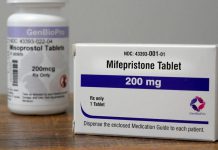On Tuesday, the Centers for Disease Control and Prevention (CDC) published a report stating that for every five mothers who die in the United States due to pregnancy and childbirth complications, three lives could have been saved if they received better medical care.
The report explained how mothers are dying unnecessarily after childbirth from pregnancy-related complications and conditions aggravated by childbirth.
The agency found through its latest analysis that more than half of deaths caused by pregnancy complications can be prevented.
The CDC also illustrated how delayed or missed diagnosis by healthcare providers, failures to identify warning signs, and a lack of access to healthcare are all contributing to the country’s status as one of the most dangerous places to give birth among developed countries.
The agency’s analysis also confirmed “persistent racial disparities” in the risks that are faced by black women, American Indian, and Alaska Native women, who are about thrice as likely to die from pregnancy/childbirth complications when compared with white women.
The CDC found, “Most deaths were preventable, regardless of race or ethnicity.”
The director of the CDC’s reproductive health division Wanda Barfield said, “Our new analysis underscores the need for access to quality services, risk awareness, and early diagnosis, but it also highlights opportunities for preventing future pregnancy-related deaths.”
In the United States, more than 50,000 women suffer from serious pregnancy or childbirth complications, of which about 700 die every year. Over the years, healthcare providers and hospitals have blamed the rising rates of maternal death on mothers being too fat, too old, or too unhealthy to have safe pregnancy and delivery.
According to the ongoing investigation by USA TODAY, medical mistakes and poor care have been the chief cause behind the rising rates in maternal death.
In general, the CDC found that heart disease and stroke were the most common causes of maternal deaths, which included emergencies such as hemorrhage and amniotic fluid embolism, cardiomyopathy.
The CDC explained that medical providers can do more to help people manage their chronic medical conditions and educate them about warning signs of life-threatening complications. Healthcare system and hospitals should take more actions to improve care.
The agency also said that women and families should learn how to recognize potential warning signs and seek immediate medical help. The CDC director Robert Redfield said, “Though most pregnancies progress safely, I urge the public health community to increase awareness with all expectant and new mothers about the signs of serious pregnancy complications and the need for preventative care that can and does save lives.”























